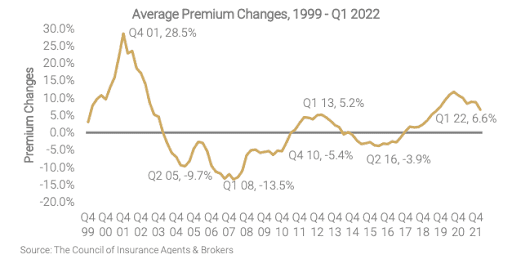ESSE news
Blog
Top 5 trucking mistakes for owner-operators to avoid


With current market challenges affecting the trucking industry, owner-operators can find success by avoiding these common mistakes.
Since I started my trucking business in 2011, I’ve learned a lot about being in the trucking industry and what it takes to make your operation successful. I’ve gone through up markets, down markets, and everything in between. But 2022 has been particularly rough for owner-operators and small carriers, with over 9,000 people no longer using their trucking authority in May, instead becoming leased on to larger carrier fleets or leaving the industry altogether.
In these times, owner-operators can’t afford to make mistakes or overlook important business details. Here are the top five mistakes to avoid in the trucking industry and how you can overcome them to strengthen your trucking business and grow your rates:
Not keeping track of all your operating costs
Managing operating costs is the number one concern for owner-operators in the current market. But not every trucker takes the time to get the full picture of their expenses. There is a lot to keep track of. Your average cost per mile is an important piece of data that will let you gauge how much you’re spending on your truck and your business over time while tracking fixed costs like insurance and variable costs like fuel or miles per gallon can give you a good sense of what your profits will be before you even pick up a load.
No owner-operator wants to work all day or all week long only to find out that they didn’t make any money or are barely breaking even because they have to deal with their operating costs. And because your operating costs will always fluctuate depending on the market, you should continually track these costs and take measures to address them. For example, calculating your miles per gallon to help improve fuel efficiency is one of the best methods for saving on fuel costs.
Not being prepared before departing on your route
If you were a pilot, before you’d even take off, you’d have to know where your destination is and how exactly you’re going to get there. The same thing applies when driving a truck
You need to take the time to plan your trips before starting your logs. Where are you going to stop for fuel along the way? Where is the best place to spend the night? Are these places along your route or will you have to go out of your way to find them? What will your deadhead miles look like? Answering these questions will help you be much more efficient with your time.
It can seem like a lot of upfront work, but I’ve found that using a tool like the DAT One mobile app can make planning your route much more manageable, looking at rest stops, gas prices and parking – all from one place. It takes the guesswork out of trip planning so that you can focus on getting out there and delivering loads instead of spending too much time fiddling with the GPS to figure it all out on your own.
Not having a load scheduled for the return trip
Planning your route doesn’t just mean picking a lane that pays the best and preparing for a single load. It means planning ahead for your entire journey and all the loads that will make it up on both ends.
For instance, it’d be within reason to deliver a load to Miami, FL, and pick up backhaul to deliver to Atlanta, GA on your way home. But you have to remember – the Miami to Atlanta return route typically pays much less than Atlanta to Miami. When planning your trip and thinking about your rates, you need to consider both legs of the journey, not just one. In this case, that means trying to make as much profit as possible on the Atlanta to Miami route since the market can make it much harder to cover costs on the return trip.
The main takeaway is that for every load you consider hauling, you should base your rate on the next couple of loads you plan to take. When you look at a load and think that the rate seems good, it’s important to realize that the rate for that single load isn’t the full picture, as demonstrated in the above example. By scheduling loads ahead of time, you will have a fuller picture of your complete costs and profit opportunities, which means you are more empowered to maximize your profits. Plus, without planning ahead, you could risk spending a long time parked waiting to find a load, or you might have to deadhead a long way for your next one. This highlights the importance of the first point about tracking operating costs, as deadhead miles have a major impact on an owner-operator’s costs per mile.
Not factoring in deadhead miles
All truckers want to keep their deadhead miles to a minimum, but it’s often easier said than done. And without proper planning, owner-operators can end up with a ton of deadhead miles after delivering a load. Even if that load seemed like a valuable one, it’s essential to remember that your profits are tied to two loads: the load going in, and the load going out.
The best case scenario would be to pick up a load that’s directly on your way back, but that often isn’t possible. Let’s say I’m taking a load from Lexington, KY to Billings, MT, that pays really well. However, many truckers might not consider one extremely important factor: There’s no freight coming out of Billings. That means I will likely have to deadhead for at least some, if not all, of my return journey. That’s going to make the really good pay from the first leg much less appealing overall and may make me reconsider whether it’s worth picking up that freight in the first place.
If you do choose to pick up a load like the one described above, knowing the number of deadhead miles you’ll drive to pick up a load is valuable information when negotiating rates with brokers. As an example, I might see a load on a lane that the DAT Load Board tells me is paying $2.59 per mile, but with a pickup location that’s 90 miles from where my truck currently is. With this information, I can call the broker and use this information to reasonably explain what rate would be appropriate for that load.
Not properly maintaining your truck
Maintenance and upkeep for your truck are two of the most important routines for an owner-operator to establish. Without doing so, truckers risk breaking down and dealing with even higher costs down the line. For example, an engine rebuild could cost you at least $40K and keep you off the road for weeks.
In many cases, truck repairs can be avoided with a simple upkeep routine to spot any issues before they damage your vehicle. For example, make a habit of checking your tire pressure, oil and fluids, and so on. In addition, you can save money on repair and maintenance costs by making changes like using low-rolling resistance tires, which offer more longevity and smoother driving.
At the end of the day, even the most well-maintained trucks will need repairs at some point. That’s why one of the best things an owner-operator can do to keep their truck in ship shape is to save a nest egg specifically for routine maintenance. When you factor maintenance and upkeep into your business expenses, it becomes much easier to be consistent with your upkeep.
Find success with DAT in the passenger seat
There are plenty of tools and resources out there to help owner-operators avoid common mistakes and make the most of being an owner-operator or small carrier. In my time running a trucking business, using the DAT load board and the DAT One mobile app has given me a massive leg up in making sure things run smoothly and that my rates are as high as possible. When equipped with the right information, truckers can easily haul their way to long-term success.





























